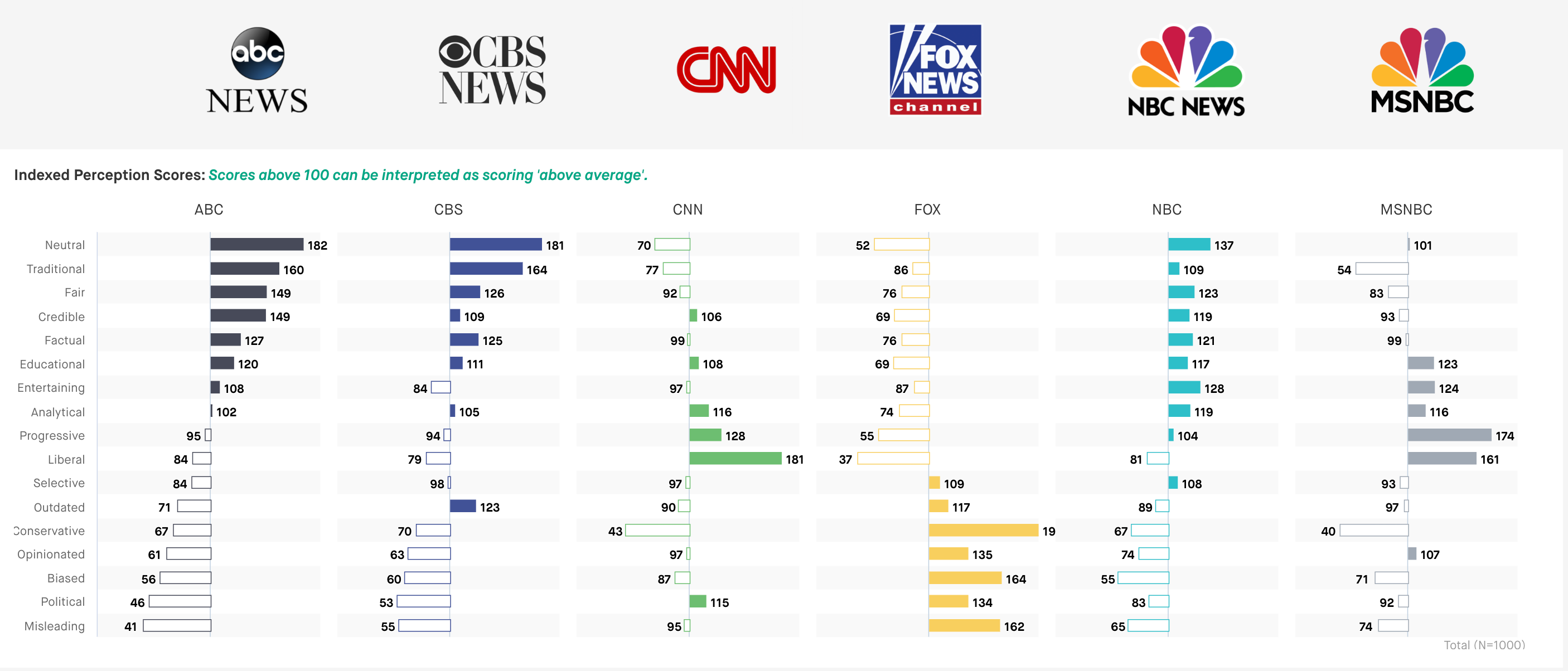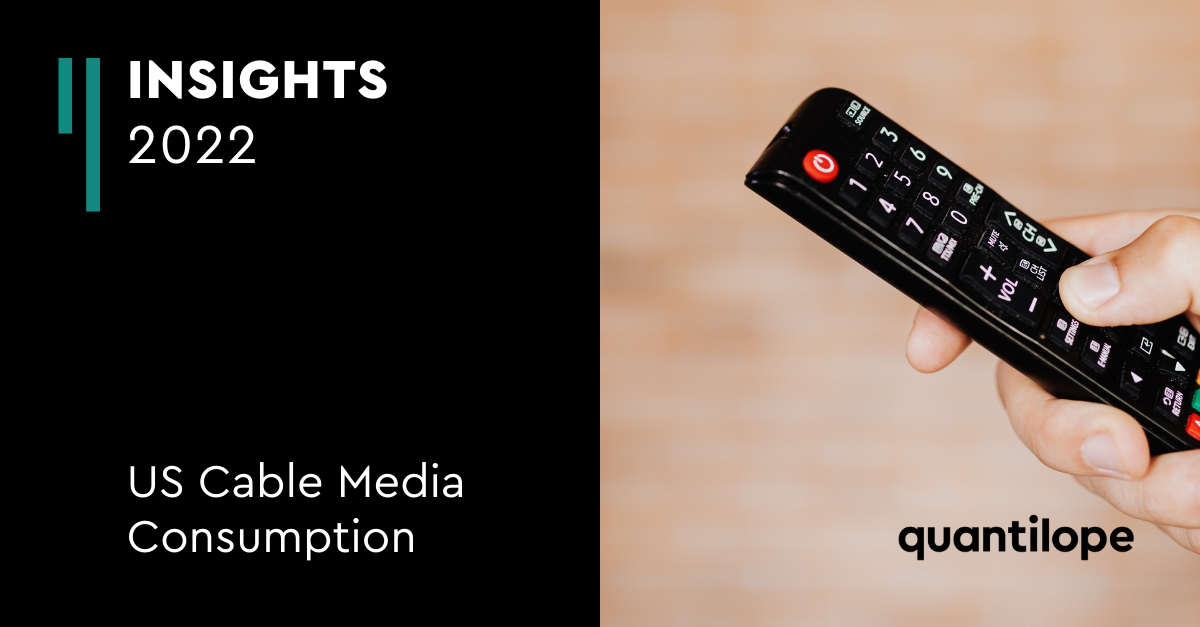This quantilope syndicated study captures a variety of cable media usage and attitude metrics from 1,000 US consumers, representative of the general US population.
The study dives into what consumers are currently spending for cable, why some consumers decided to 'cut the cord' on their cable subscription, what these cord-cutters might be willing to spend if they signed back up for cable in the future, and much more.
The goal of this study was twofold:
Understand the subconscious associations consumers have as it relates to six major broadcast news providers in the US.- Determine how cable providers can better tailor their content to consumers, whether that's through an ideal show lineup or a change in budget or package offerings.
Subconscious Associations of the 6 Major Broadcast News Networks:
To uncover how consumers implicitly (aka, subconsciously) feel about some of the biggest names in broadcast cable media, this study leverages a Multiple Association Test (MAT). Founded in neuroscience research, an MAT is an implicit research method that uses visual stimuli and reaction time calculations to uncover subconscious associations towards multiple brands, products, or in this case: cable news broadcast networks. In this study, the MAT measured which of the 6 major networks (ABC News, CBS News, CNN, Fox News, NBC News, and MSNBC) consumers associate most strongly with certain perceptions (i.e. factual, educational, biased, fair, etc.).
While it's commonly known that certain networks hold reputations for various reasons, the MAT hones in on which exact perceptions stand out among a representative group of the US population at large.
As shown below, the results vary considerably among each of the 6 news broadcast networks, with scores above 100 indicating an 'above average' association. ABC, CBS, and NBC are similarly viewed as 'neutral', 'traditional', and 'fair' (among other shared associations). CNN stands out as a broadcast network considered to be 'analytical', 'progressive', and 'liberal'. Fox News (in stark contrast to CNN) stands out as a network known to be 'Conservative', 'Opinionated', and 'Biased'. Finally, MSNBC is considered a network that is 'Educational', 'Entertaining', and 'Progressive'.

More comparisons between these networks, including a visual association map, can be found by accessing the full dashboard below, or by completing the form at the bottom of this blog post.
What does an ideal cable TV lineup look like for consumers?
A TURF analysis is used to identify the potential performance of a combination of products, features, or marketing actions to identify which portfolio of items appeals to the greatest number of consumers.
This study applied a TURF analysis to understand what an ideal content lineup looks like for a potential cable network. The results show that there are three genres that really drive viewership: Documentaries, Dramas, and Live Sports. These three types of shows combined would reach a total of 79% of viewers. Adding Sci-Fi content to this line up would reach an additional 8% of viewers for a total of 87% reach, and adding Reality TV on top of that would reach an additional 5% of viewers for a total of 92% reach.

TURF analyses are hugely beneficial in helping a business understand the risk vs. reward of using additional resources to increase their offering. If adding an additional product, service, or in this case - show genre, only reaches a small increment of new consumers, it might not be worth the added costs/resources, and more beneficial to focus on improving the existing offering instead.
Dive into more cable media metrics:
For additional insights into both of the advanced analyses used in this study (MAT and TURF), as well as a variety of other usage and attitude metrics related to cable media, access the full dashboard using the form below:





.png)